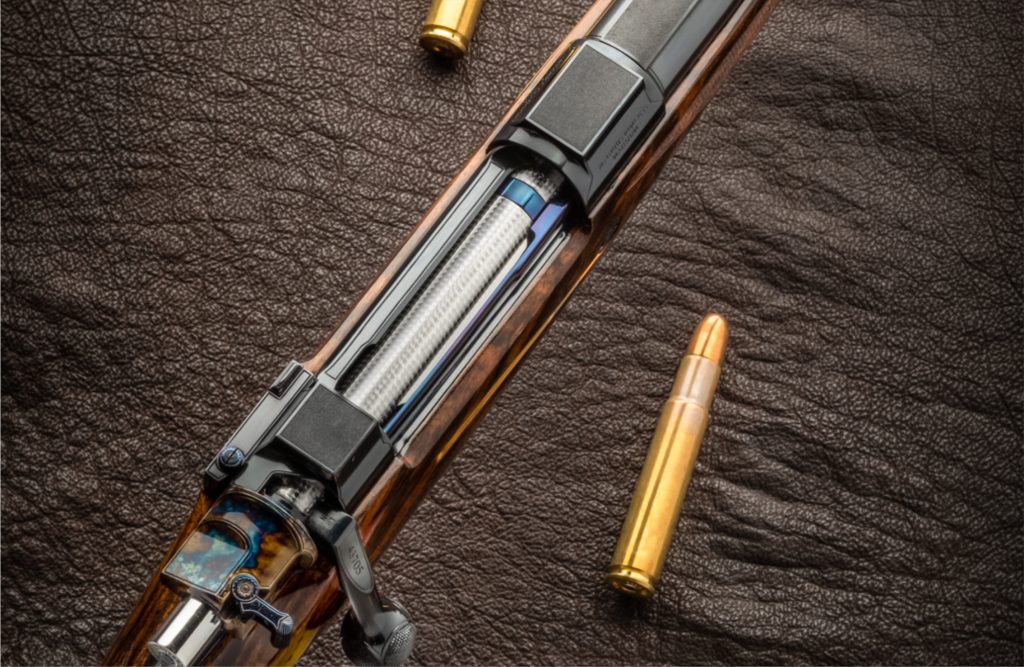During the Second World War the Gibbs factory was bombed by the Germans and a lot of their information and tooling was destroyed or damaged. The company was bought shortly thereafter by the Crudgington family from Bath who continued production to the same standards of the Gibbs firm. The original rifles were built on Mauser Magnum actions (never the standard M98 action). After 1945 .505 Gibbs rifles started to be built around a variety of actions long enough to accommodate the big cartridge. Included among these were the Mauser Magnum, Brno ZKK 602 and Brevex M400 (Figure 3). After this a number of copies of Mauser Magnum actions big enough to accommodate this calibre appeared in the United States, Belgium, Germany and South Africa.

Caliber description and specifications
The .505 Gibbs is a rimless, bottleneck cartridge. Case specifications are shown in Figure 1.
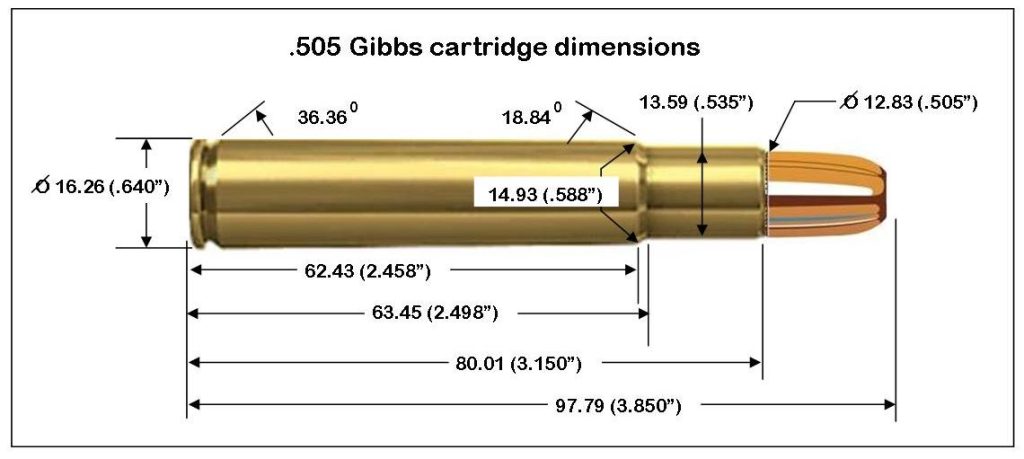

History
The caliber was developed in 1910 by the company of George Gibbs Ltd. based in Bristol England. The .505 was originally designed with doubles in mind but with the advent of the Mauser 98 and Mauser Magnum actions, the company decided to produce repeating bolt action rifles for this cartridge. Only one .505 Gibbs rifle was produced in 1914 but an order was received for 11 more. However, it was not very popular to begin with because it arrived with the onset of the First World War and at a time when unlimited ivory hunting came to an end.
This was unfortunate because this calibre has proved to be one of the most impressive in the history of African hunting. The original cartridge with a bullet of 525 grains produced a muzzle energy of 6180 foot pounds at a moderate 35 000 CUPs (Copper Units of Pressure). This cartridge was originally loaded with 90-grain (5.8 g) of cordite. The .505 Gibbs was intended for hunting dangerous game in a tropical environment and due to the temperature sensitivity of cordite the lower pressures provided a greater safety and reliability margin.
After the war the Gibbs firm resumed production of sporting firearms and by 1920 the .505 Gibbs had become part of the African hunting scene. However, it was still not well known, and subsequently there was not much of a demand for the calibre. Consequently, only fifty-two rifles were produced for the .505 in the 19 years between 1920 – 1939. Ironically now, more than a century later, this caliber, owing to its impressive ballistics, is becoming popular with dangerous big game hunters.

Shooting the .505 Gibbs is an experience not to be forgotten and can leave you with watery eyes and feeling like someone punched you in the nose (Figure 4). But for those who are not recoil shy, it imbues one with a real sense of power and confidence.
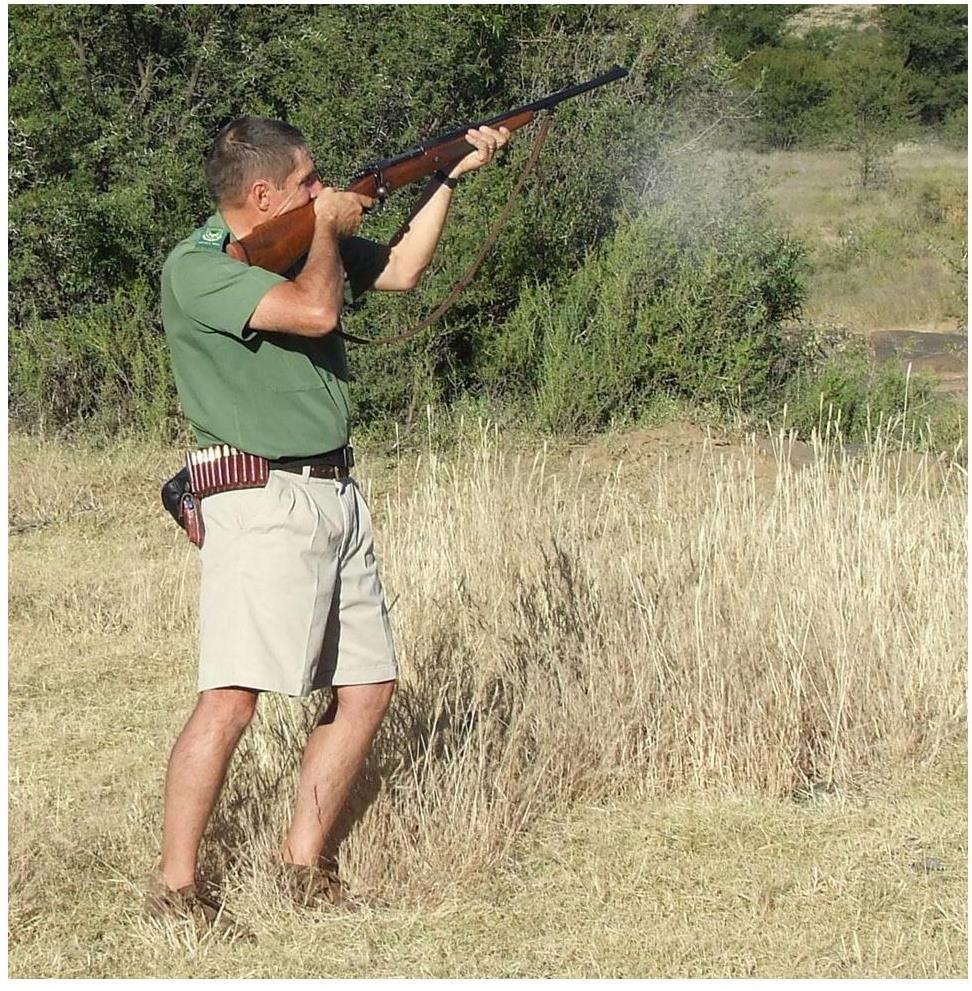
To get an idea of the recoil of the .505 Gibbs the following table (Table 3) compares the Relative Recoil Factor (RRF) to other well-known calibres. The RRF is based on the muzzle momentum of the bullet and the expelled powder gas for a typical loading.
|
CALIBRE |
RELATIVE RECOIL FACTOR |
|
.270 Winchester |
1.82 |
|
.308 Winchester |
1.95 |
|
.375 H&H Magnum |
3.42 |
|
.416 Rigby |
4.27 |
|
.458 Winchester Magnum |
4.36 |
|
.505 Gibbs |
5.44 |
|
.500 Nitro Express 3-inch |
5.52 |
|
.700 Nitro Express |
9.00 |
Ballistics
Typical contemporary ballistics for the .505 Gibbs factory-loaded ammunition is shown in Table 4 below.
|
Bullet weight |
600 grain solid |
540 grain solid |
|
Muzzle velocity |
2100 fps |
2300 fps |
|
Muzzle energy |
5777 ft-lbs |
6345 ft-lbs |
|
Velocity at 100 yards |
1899 fps |
1972 fps |
|
Energy at 100 yards |
4805 ft-lbs |
4662 ft-lbs |
|
Velocity at 200 yards |
1711 fps |
1674 fps |
|
Energy at 200 yards |
3904 ft-lbs |
3362 ft-lbs |
|
Trajectory at 200 yards |
-8.1 inches |
-7.4 inches |
RECOMMENDED FOR SPECIES
The .505 Gibbs is a superb calibre for the whole range of dangerous species of Africa and for all types of hunting conditions. Many hundreds of elephant, hippo, buffalo, and rhino have been successfully hunted with this calibre which was also the standard calibre rifle issued in some African game departments.
Famous hunters who used this cablibre
One of the earliest men to use the .505 Gibbs was Sir Samuel Baker famous hunter and explorer (Figure 5). He discovered Lake Albert in Uganda / Congo and the origin of the White Nile. John A. Hunter, a famous professional hunter in Kenya, was a strong proponent of this calibre and used his game department .505 Gibbs to dispatch many elephants. He had the utmost confidence in this cartridge when called upon to stop elephants in their tracks when they charged. Hunter wrote a number of books describing his hunting experiences including: “Hunters Tracks”, “African Bush Adventures”, “Hunter”, and “White Hunter” (Figure 6).

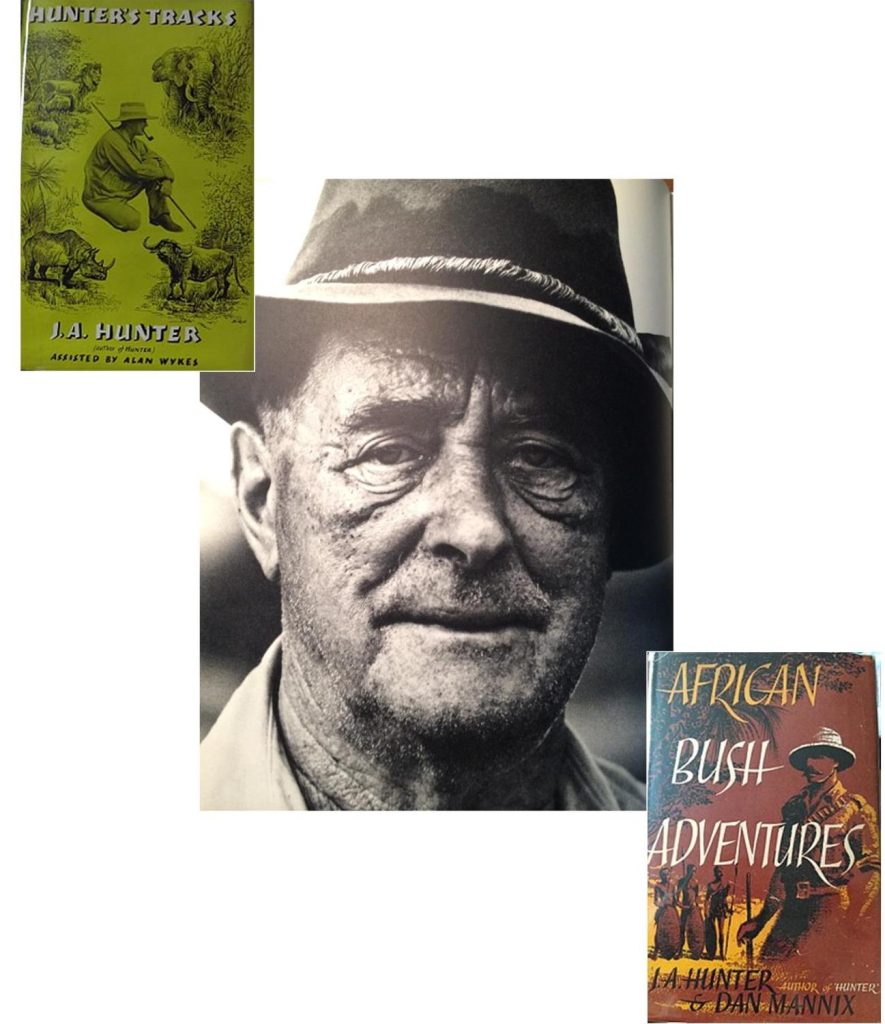
Philip Hope Percival (1886 – 1966), was one of the greatest professional hunters of all time, and was the founding president of the ‘East African Professional Hunters’ Association’ (Figure 7). Arriving in British East Africa in 1906, he was lured into hunting by the Hill brothers, the three men becoming involved in running the transport for Theodore Roosevelt’s famous Safari of 1909-10.
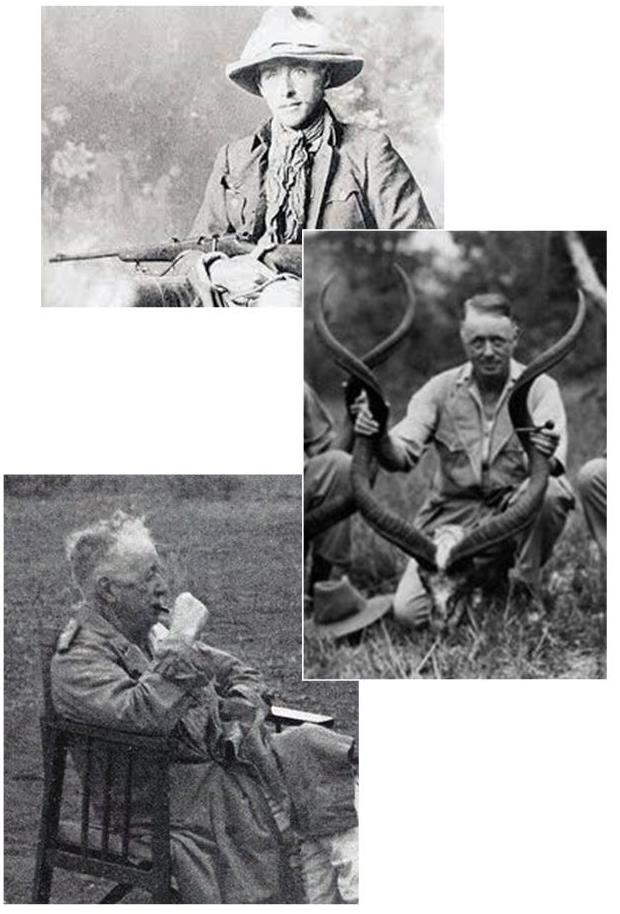
One of his early partners in the safari business was Bror Blixen, husband of Karen Blixen (Out of Africa). In later years he mentored a whole generation of professional hunters, including Sid Downey and Harry Selby. He was acknowledged by his peers as the Dean of Professional Hunters and was elected to thirty-four consecutive terms as president of the East African Professional Hunters Association. He became the highest-paid professional hunter of the 20th century.
Although Percival did much of his hunting with .450 (3 ½” No.2 Nitro Express) double rifles he was also fond of and was one of the first professional hunters to also use the .505 Gibbs.
Before his death, Percival compiled a manuscript recounting some of his experiences, which was published shortly after his death under the title “Hunting, Settling, and Remembering” (1967)
A Portuguese professional hunter by the name of Jose Simoes who operated extensively in Mozambique used the .505 Gibbs extensively (Figure 8).

Another noted Kenyan Hunter – Murray Smith – who assisted in the filming of the movie Magombo – starring Clarke Gable and Ava Gardner – used a .505 Gibbs as a backup on all his safaris (Figure 9).

The .505 Gibbs was also used and well-spoken of by John “Pondoro” Taylor and Tony Sanches-Arino. Of the .505 Gibbs Tony Arino-Sanches said the following: “My .505 Gibbs and I accounted for many animals, and the rifle performed extremely well with no problems”.
One of the most well-known professional hunters who is still alive and probably has the most hunting experience with the .505 Gibbs is Dr. Kevin (“Doctari) Robertson (Figures 10 and 11). A qualified vet, Dr. Robertson became a professional hunter in Zimbabwe where, apart from hunting, he also helped train aspiring PHs. His calibre of choice when it comes to hunting dangerous big game is the .505 Gibbs. His favourite rifle, with which he has accounted for many buffalo and elephants is his Dumoulin .505 Gibbs built on a Brevex M400 long action. With his veterinarian knowledge of animal anatomy and practical experience, he authored the excellent book “The Perfect Shot” which presents illustrations on shot placement on a wide variety of species. Dr. Kevin Robertson currently heads up the training programs for field guides and professional hunters at the Southern African Wildlife College.
He worked closely with the ammunition manufacturer Norma to develop cartridges for big, dangerous game.
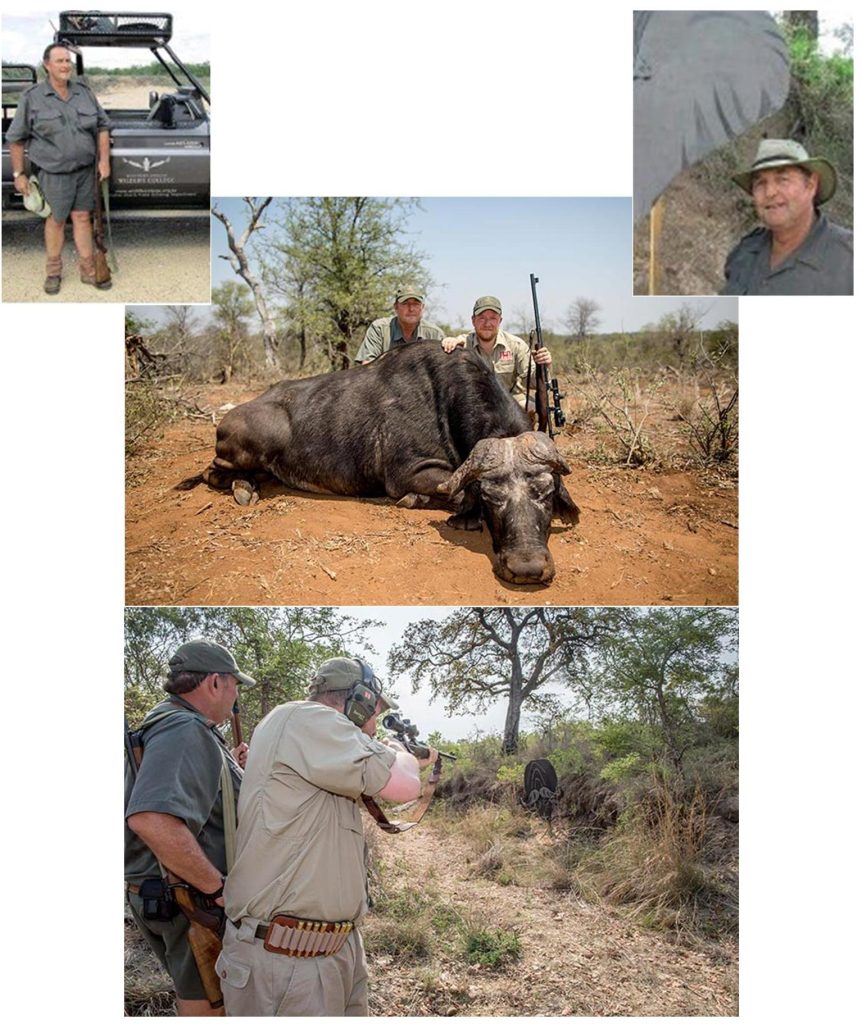

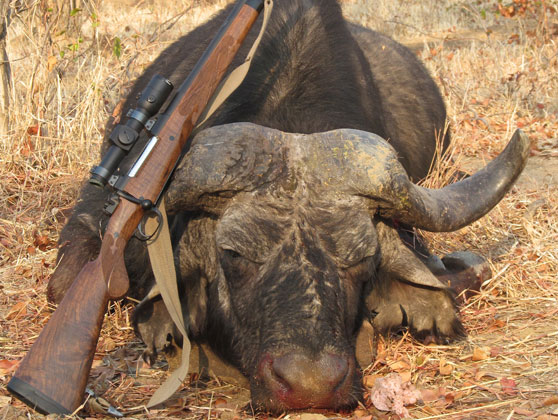
There is definitely no shortcomings in pedigree when it comes to famous hunters who have used and been very partial to the .505 Gibbs. One could not ask for a better commendation.
Manufacturers of .505 Gibbs rifles
CZ manufactured a rifle in this calibre. Sabi Rifles in Nelspruit South Africa build .505 Gibbs rifles on Sporting Mauser Double Square Bridge, CZ 550 magnum, and Dakota Arms magnum actions.
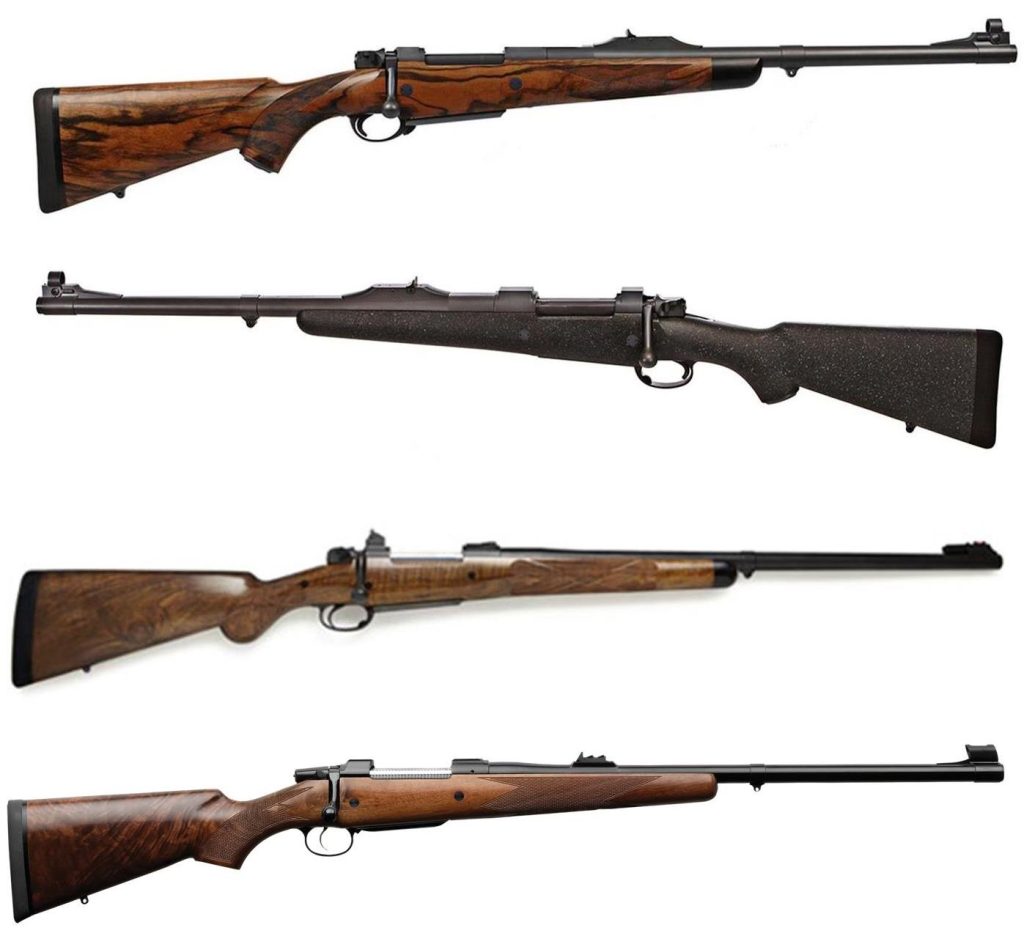
Handloading the .505 Gibbs
The .505 Gibbs is a popular cartridge to reload because, within limits, its enormous case is easy to manipulate and work with. Like most cartridges in its class, the .505 Gibbs is usually used with solids, but softs have their uses, such as when hunting Cape buffalo in herds. With its generous case capacity and long neck, the optimum bullet weight for the .505 is 600 grains. Woodleigh did the cartridge a great service when it began producing 600-grain .505-diameter bullets, and Norma did an equally great service for hunters when it elected to load the heavy Woodleighs in its African PH ammunition.
Cases for the .505 Gibbs are available from Bertrams and Norma.

For handloading data go to Load Data https://www.loaddata.com/Cartridge/505-Gibbs-Barnes-Data/4030

The future
The .505 Gibbs is an awe-inspiring cartridge that enjoys the unusual distinction of having been undersold and underrated for most of its century-old history. More than 100 years after its first appearance the .505 Gibbs is making a deserved comeback and rightfully so as it must rank up at the top with the best African big game hunting calibres. Factors that may limit its use more widely in the future are the fact that it is becoming more expensive to hunt dangerous big game animals and more restrictions are being placed on hunting them – thanks to CITES and the powerful animal rights lobby.
Fortunately, there are still a few ammunition manufacturers – Norma, Nosler, and Kynoch – producing cartridges in this calibre even though the market for it is small. Norma produces a line of ammunition called the African Professional Hunter which includes the .505 Gibbs which boasts impressive ballistic data. See Table 5 and Figure 16.
|
BULLET |
MUZZLE ENERGY Ft-lbs |
MUZZLE VELOCITY fps |
DROP AT 200 YARDS |
|
Norma Woodleigh FMJ 600 grain |
5877 |
2100 |
-8.1 inches |
|
Norma Woodleigh PPSN 600 grain |
5877 |
2100 |
-8.1 inches |
|
Norma 500-grain solid |
6345 |
2300 |
-7.4 inches |
|
Kynoch 525-grain S/SN |
6180 |
2300 |
– |
|
Nosler 525-grain Solid |
5641 |
2200 |
-0.8 inches |
Table 5: Some cartridges currently available for the .505 Gibbs
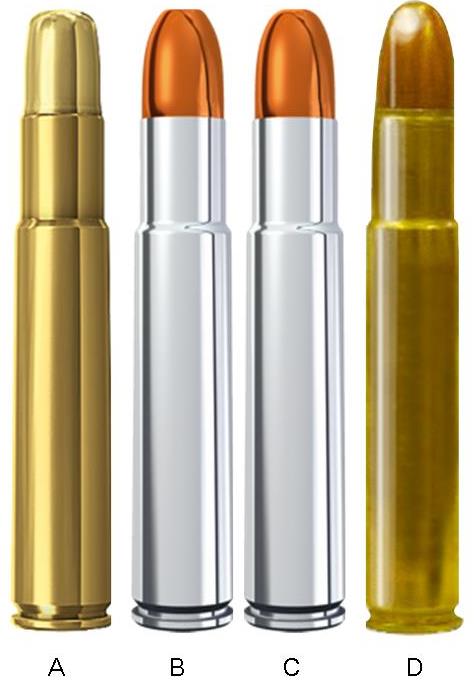
References
- Bussard, M. (2011): Ammo Encyclopedia 3rd Ed. Ingrid Book Company and Baker and Taylor.
- Forker, B. (2006): Ammo & Ballistics 3rd Ed. Safari Press.
- Sanchez-Arino, T (2013): Great African Calibers. Safari Press.
- http://www.sabirifles.co.za/actions.htm
- http://www.norma-usa.com/index.php/products/ammo/cartridge-of-the-month/167-cartridge-of-the-month-505-gibbs
- https://www.africahunting.com/threads/505-gibbs.3589/

